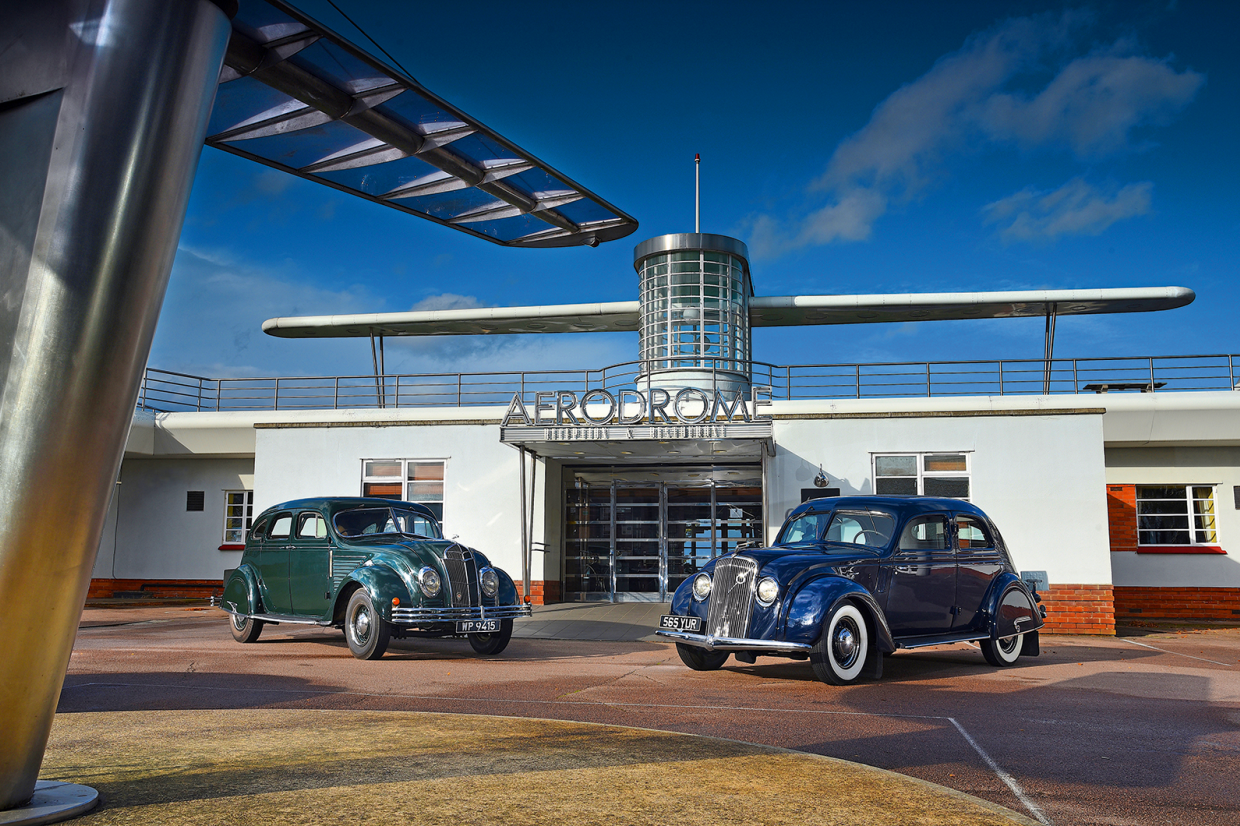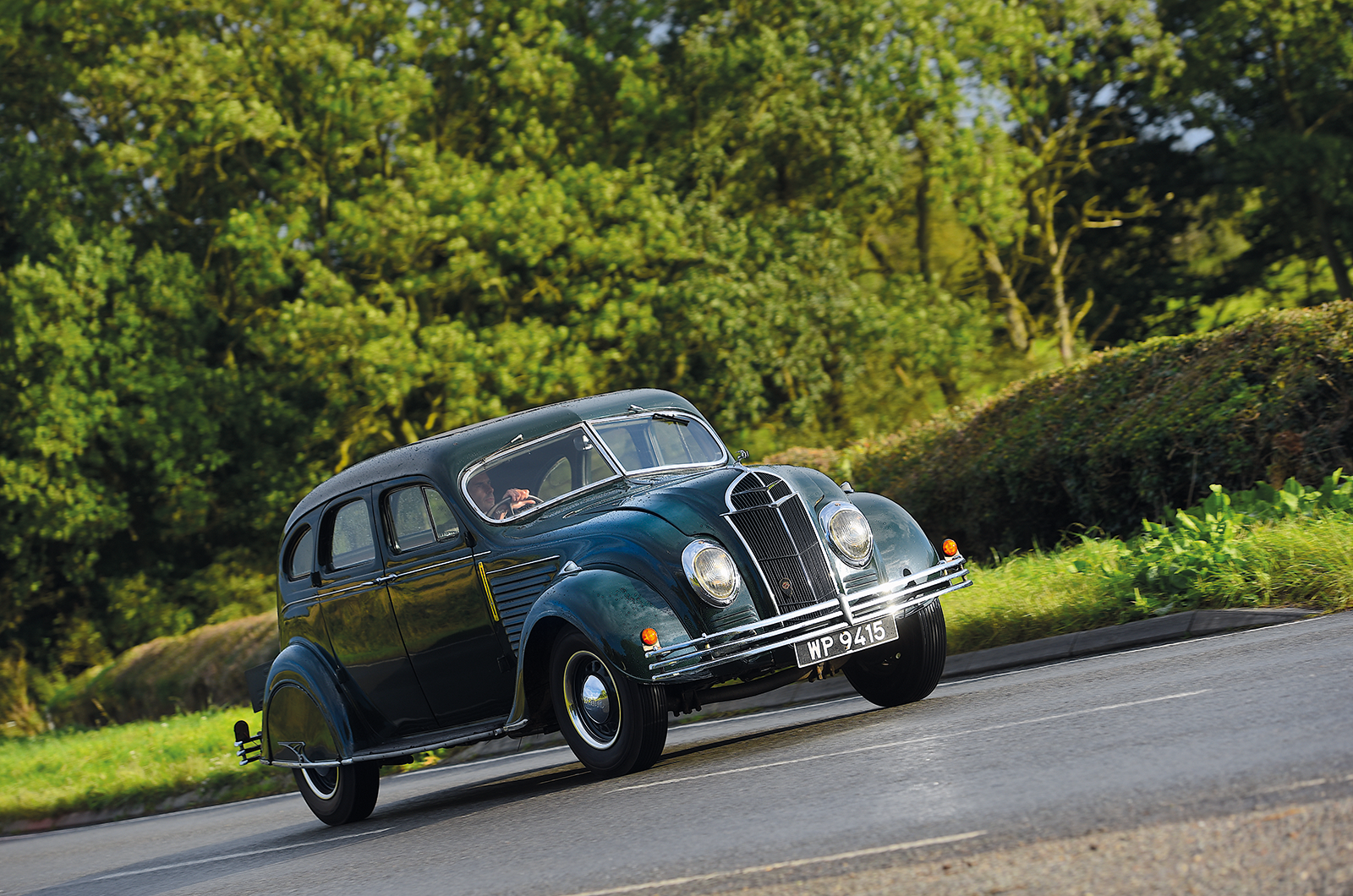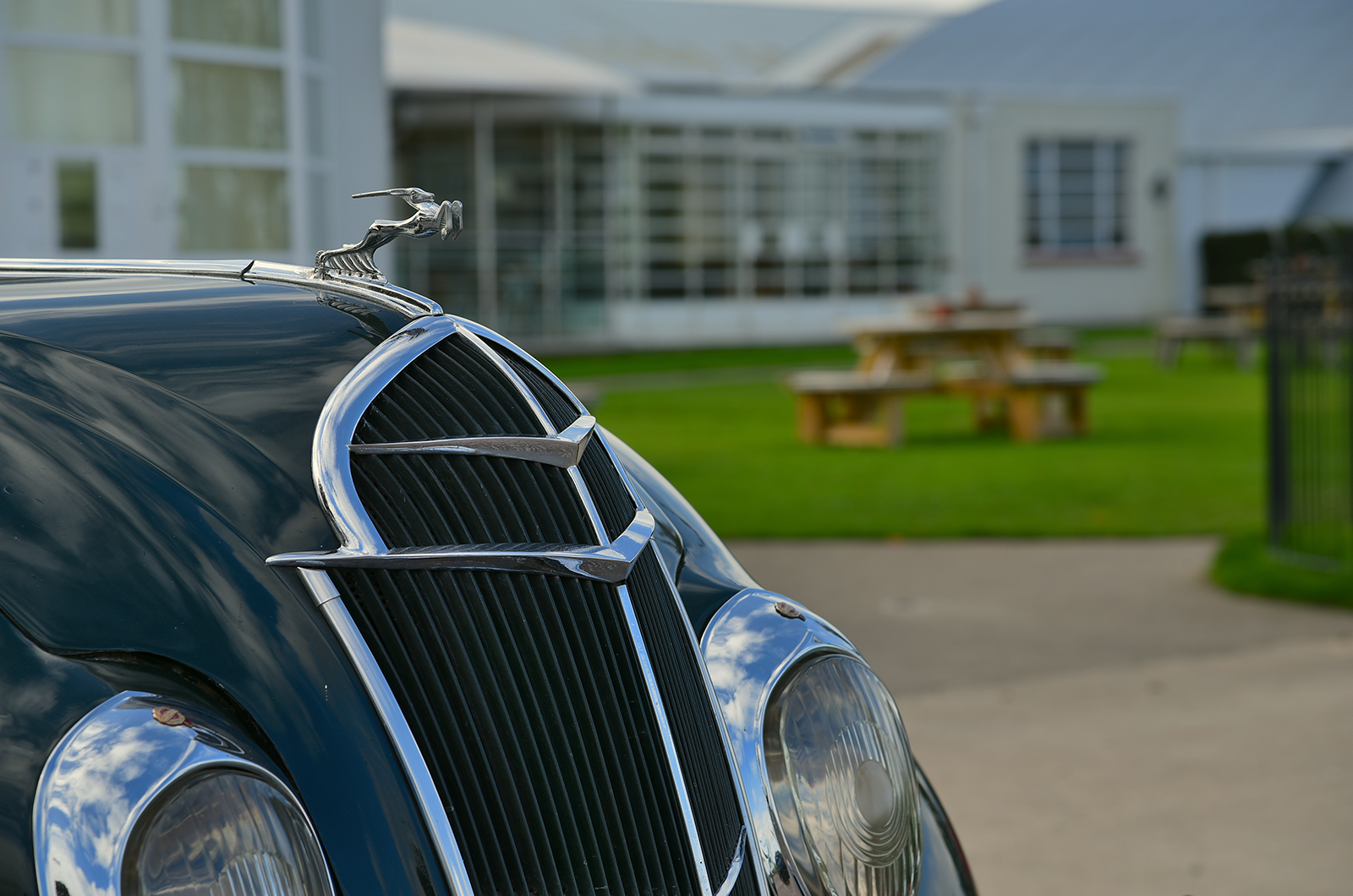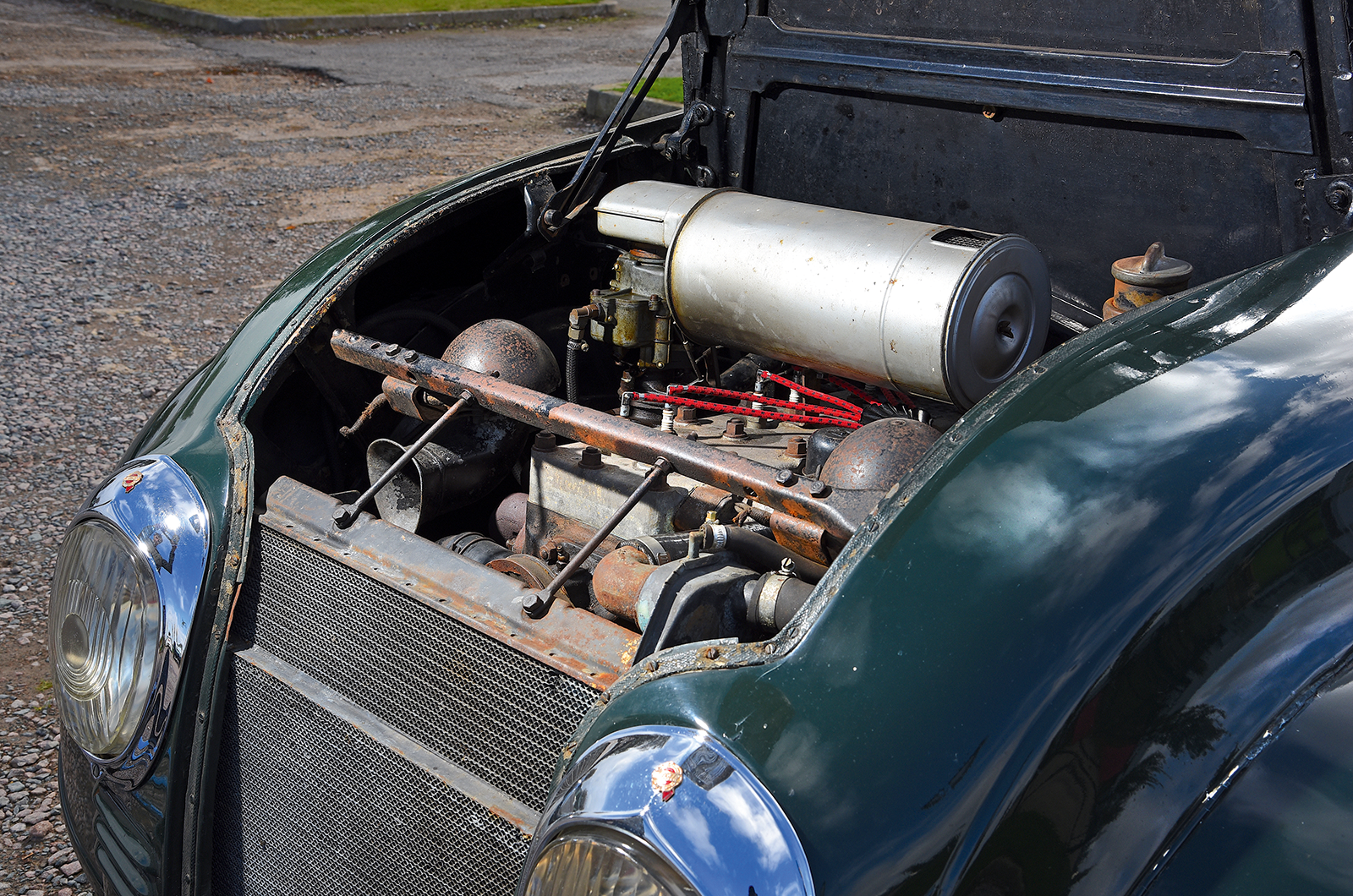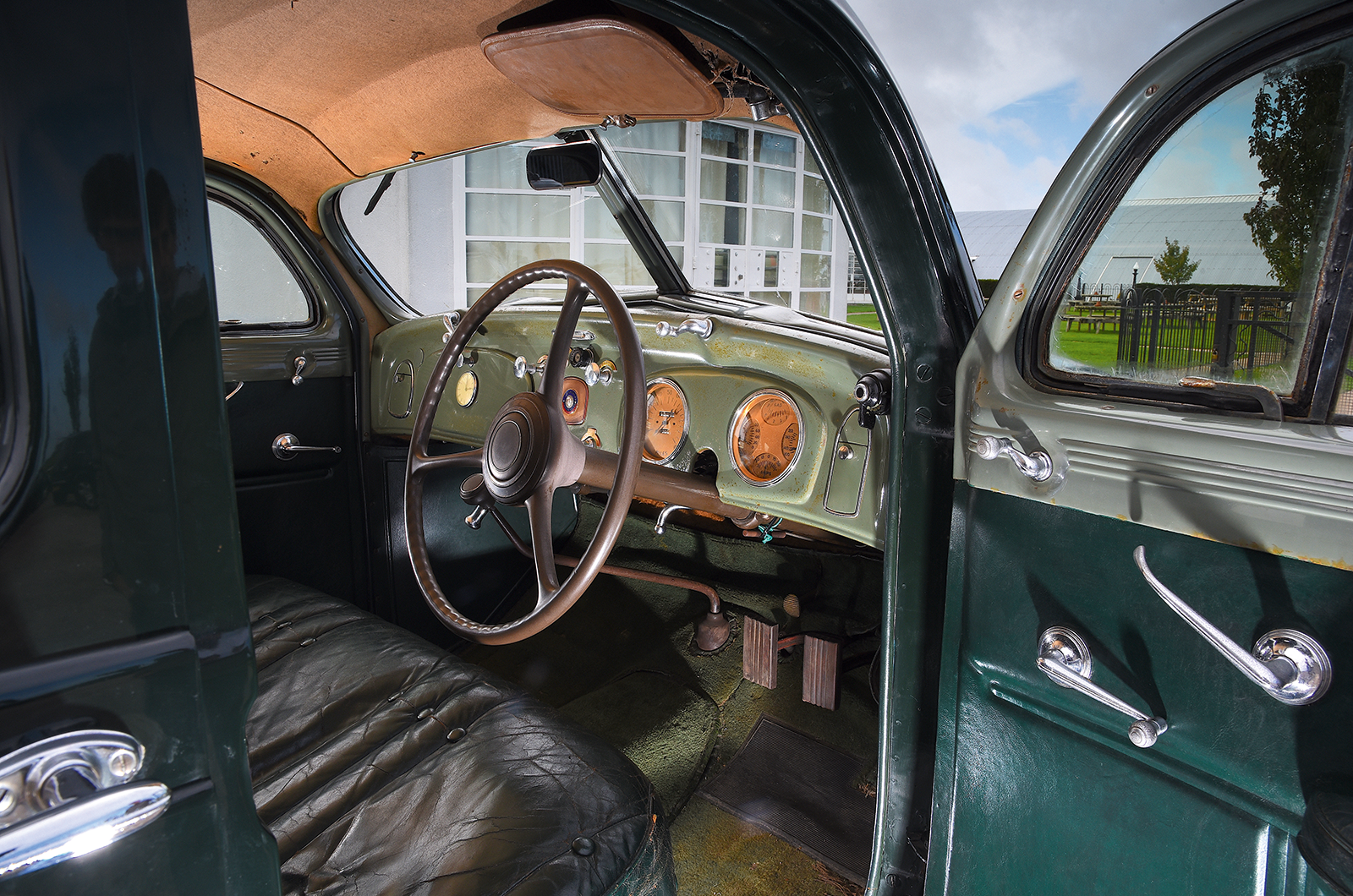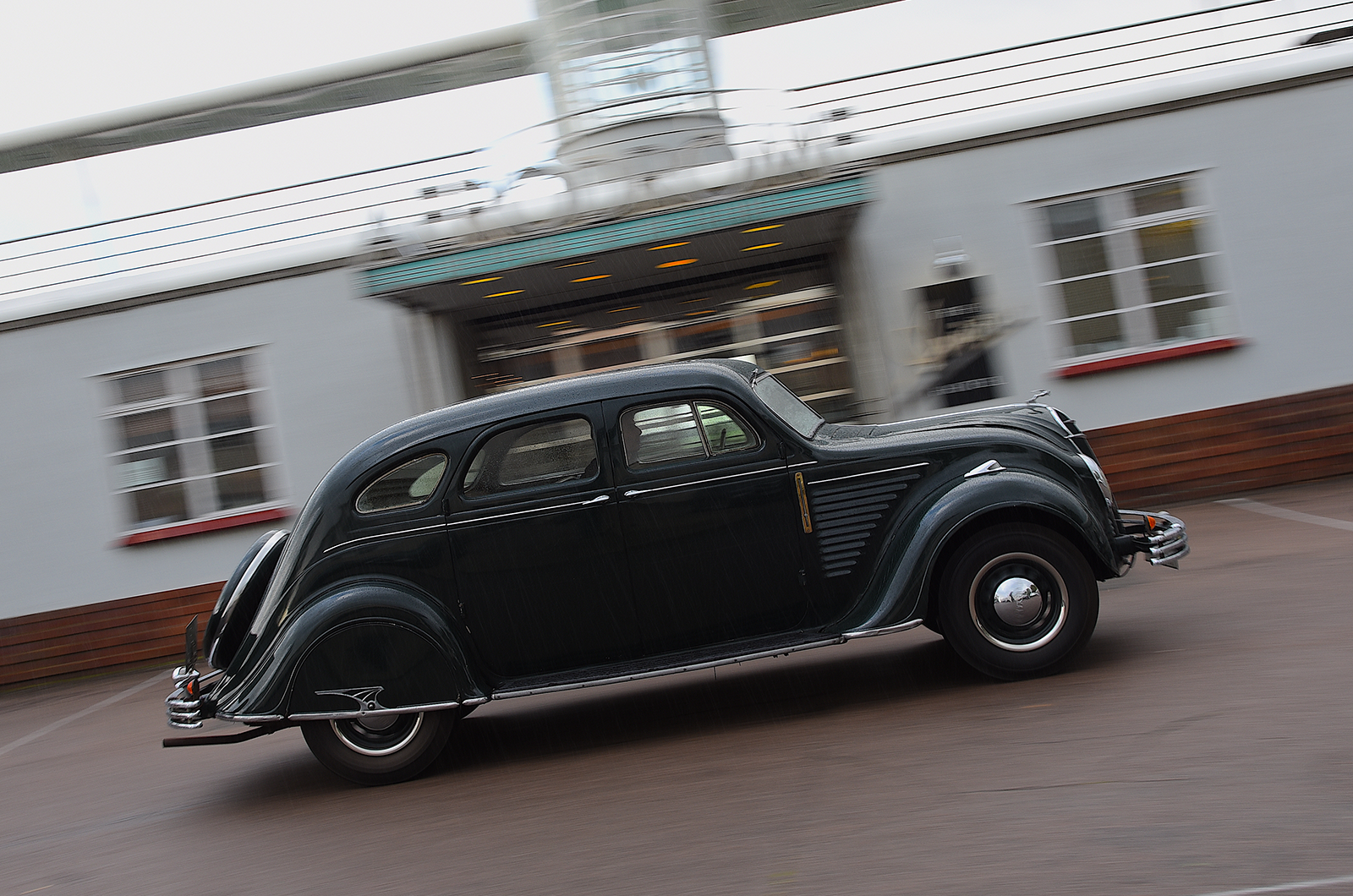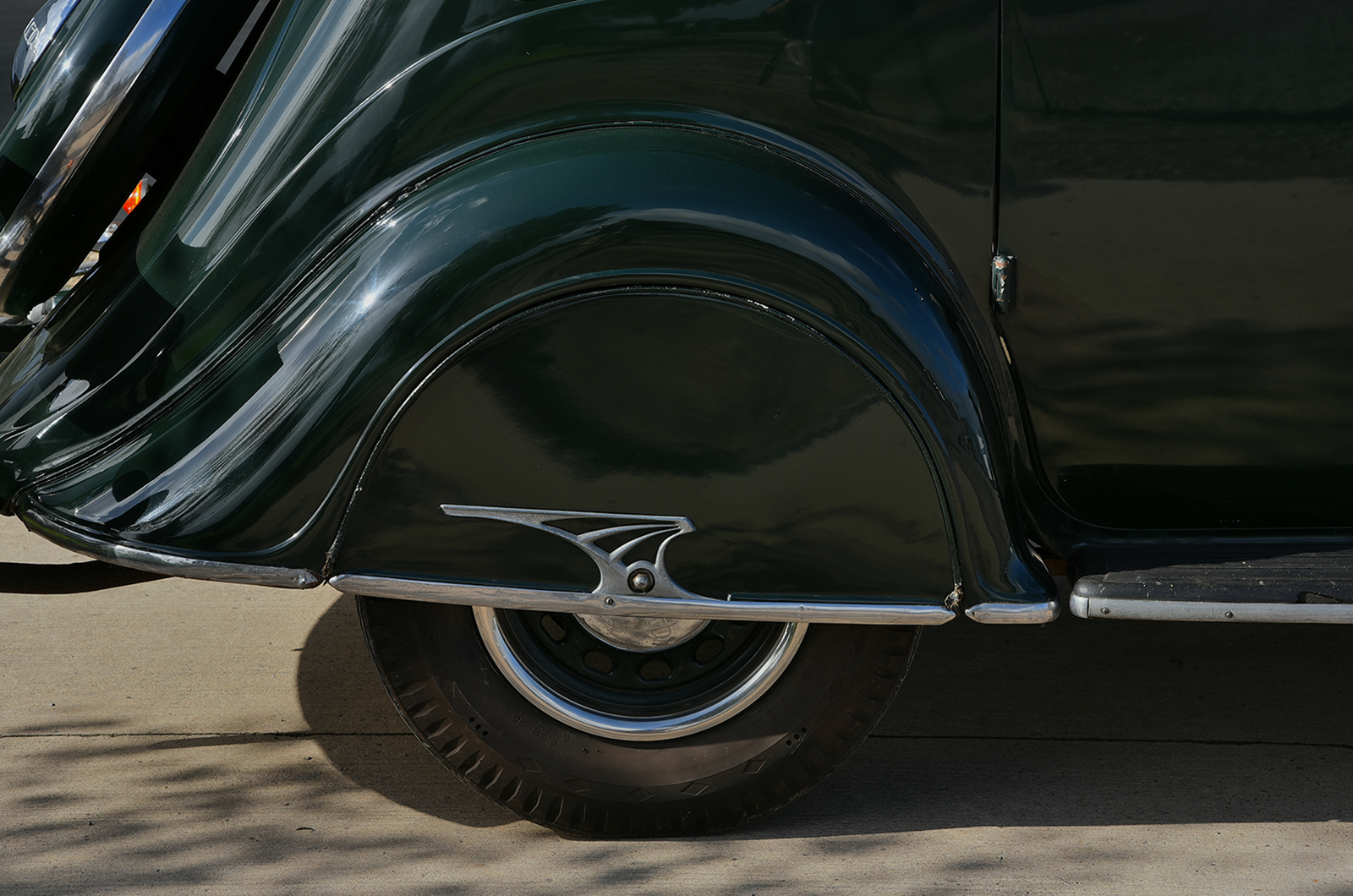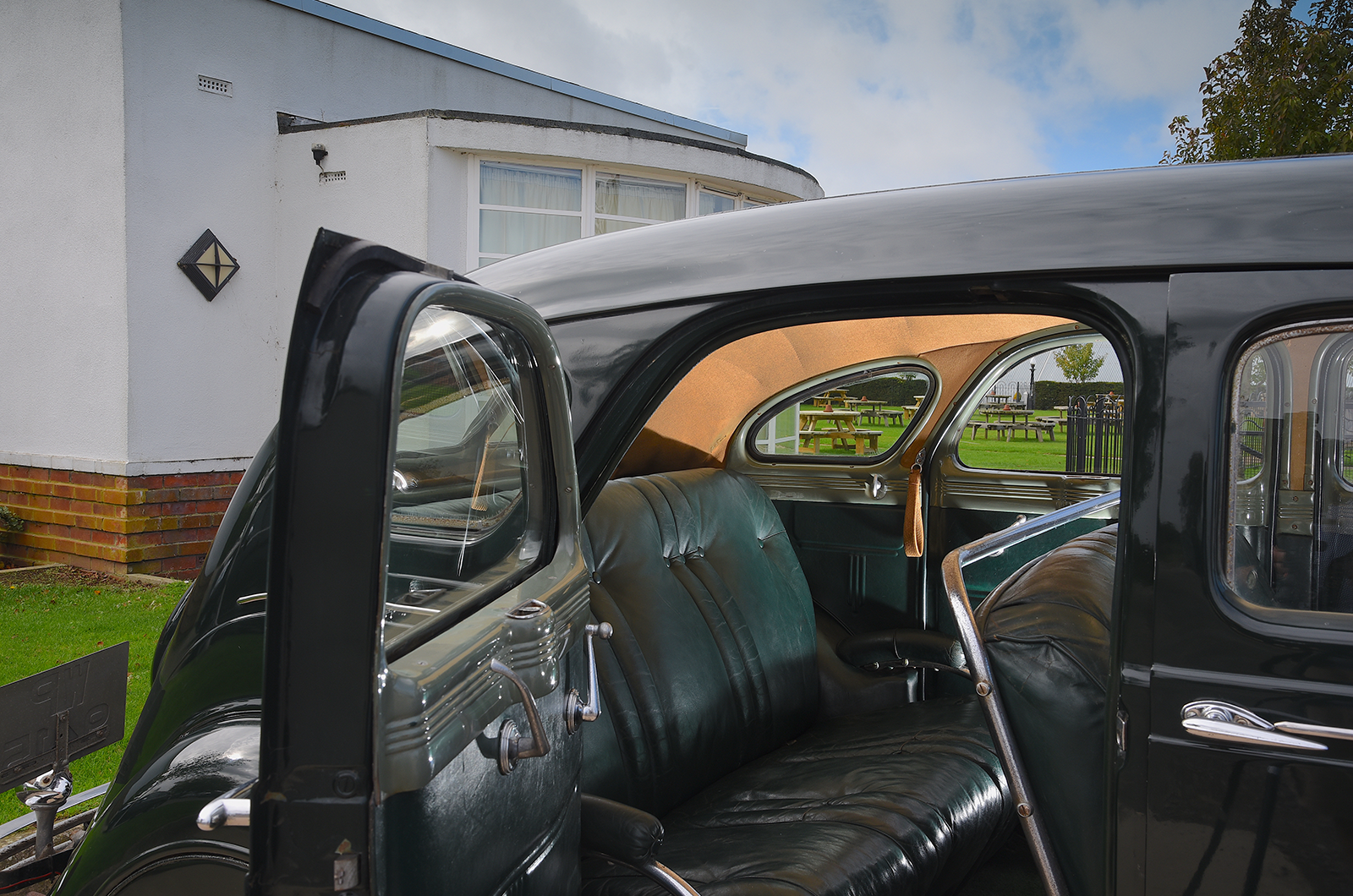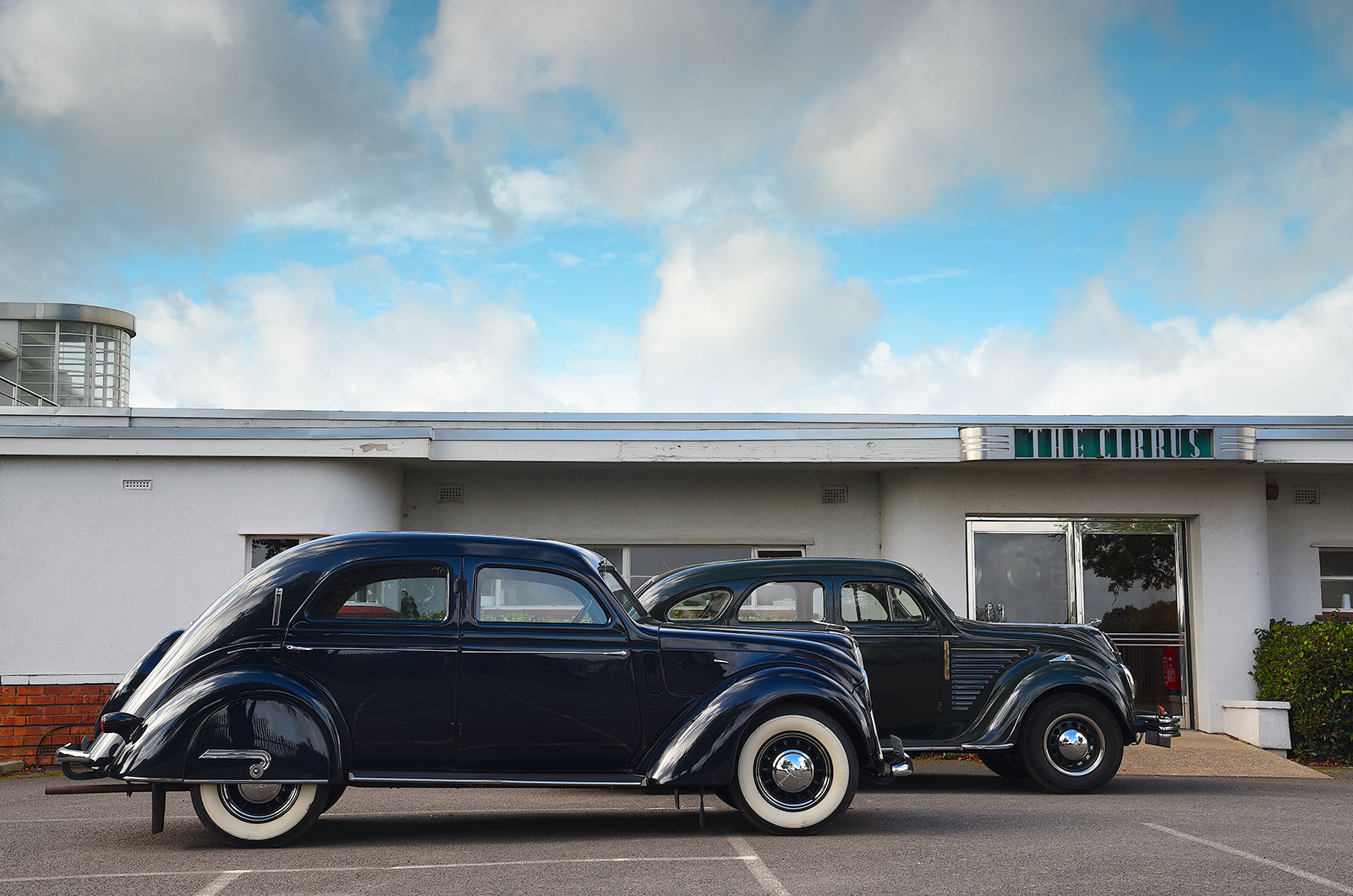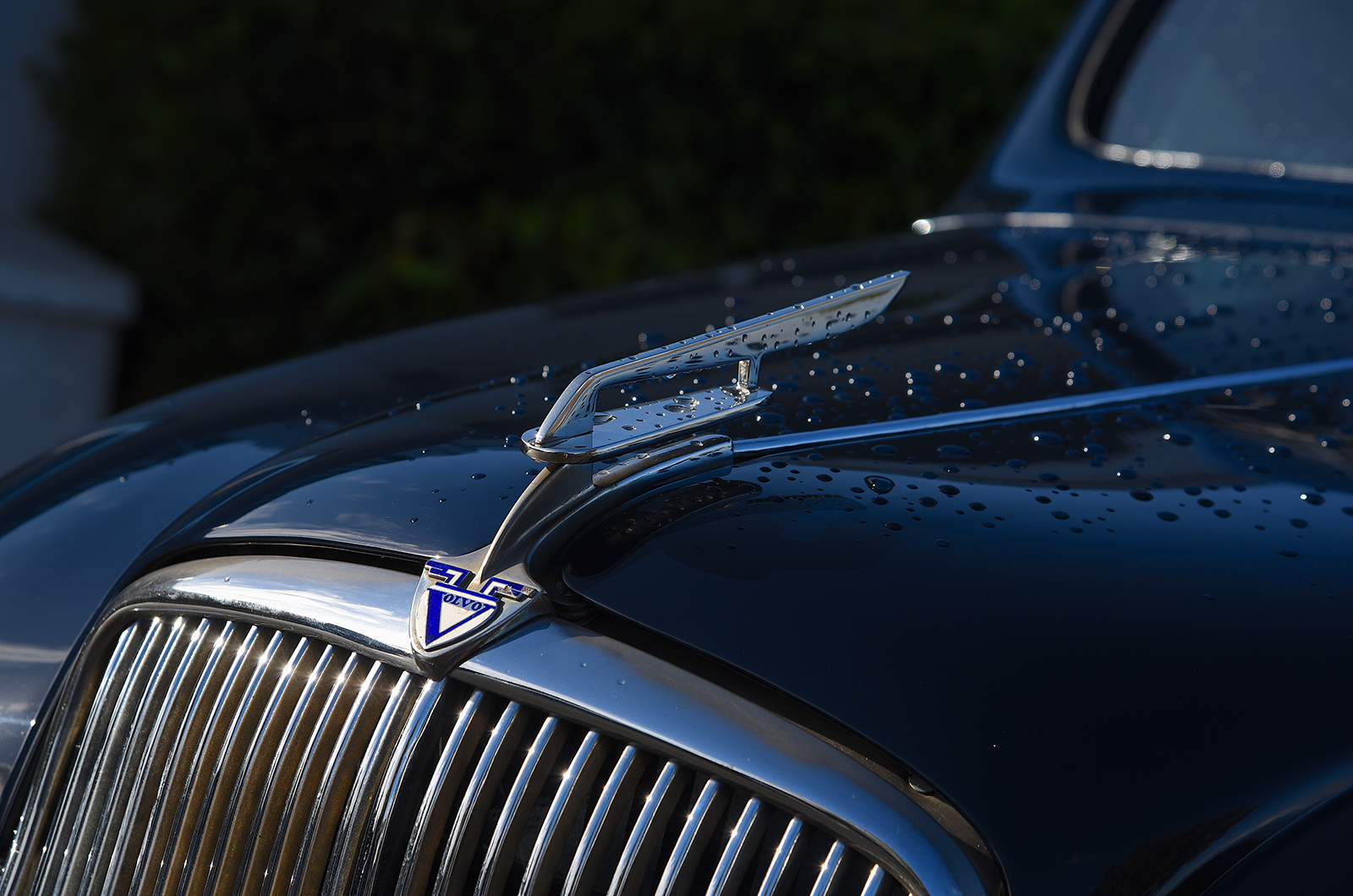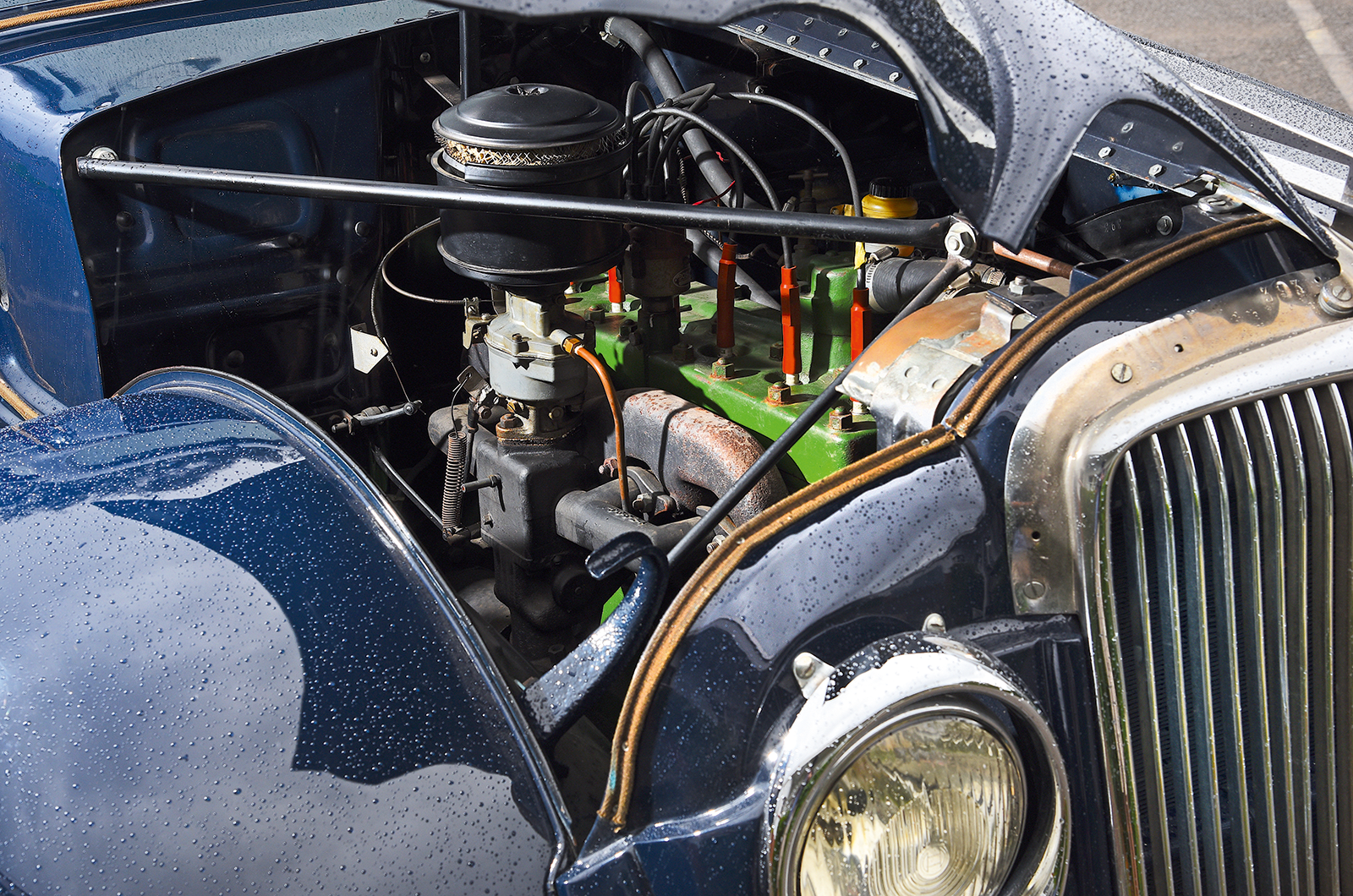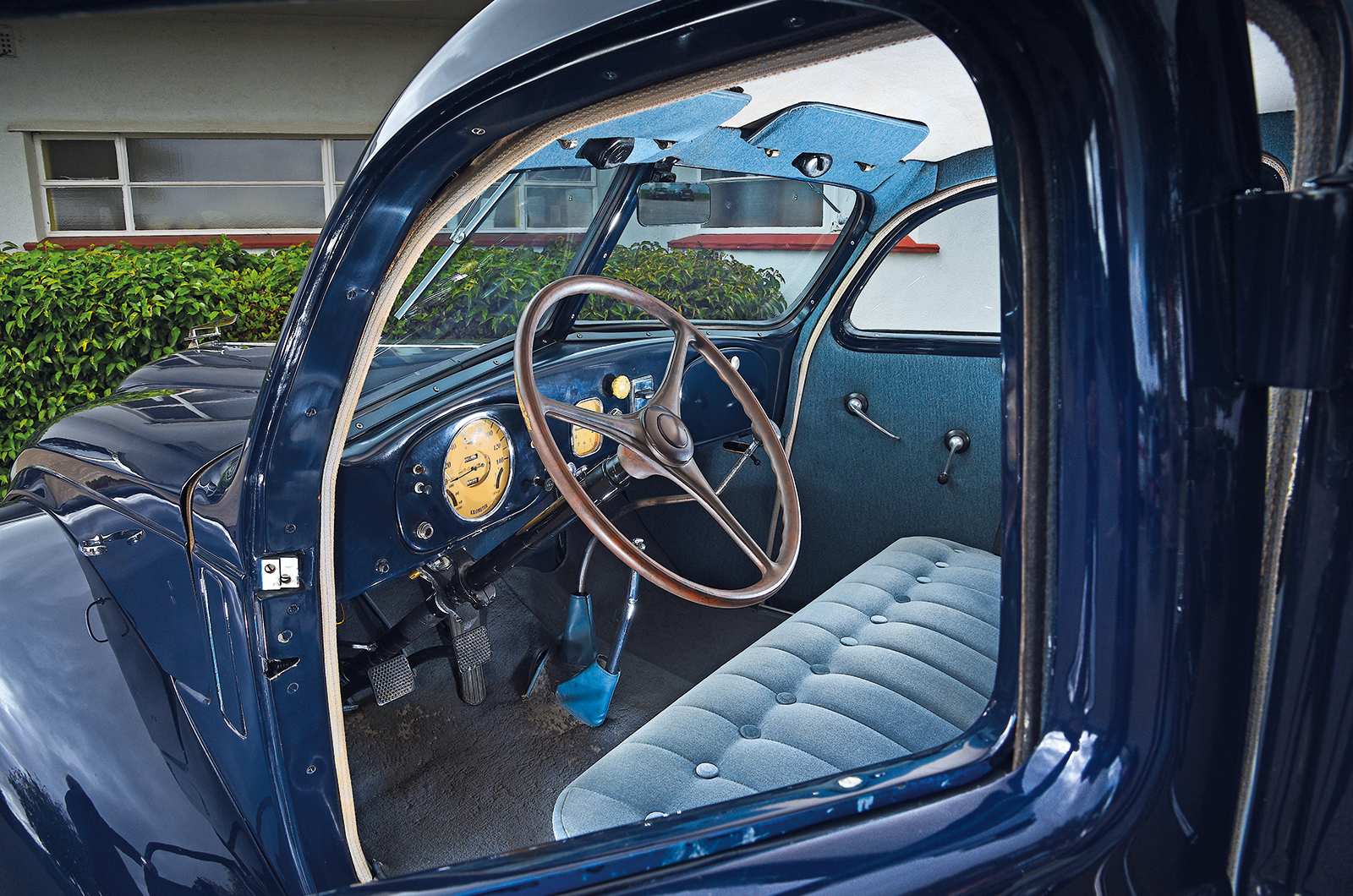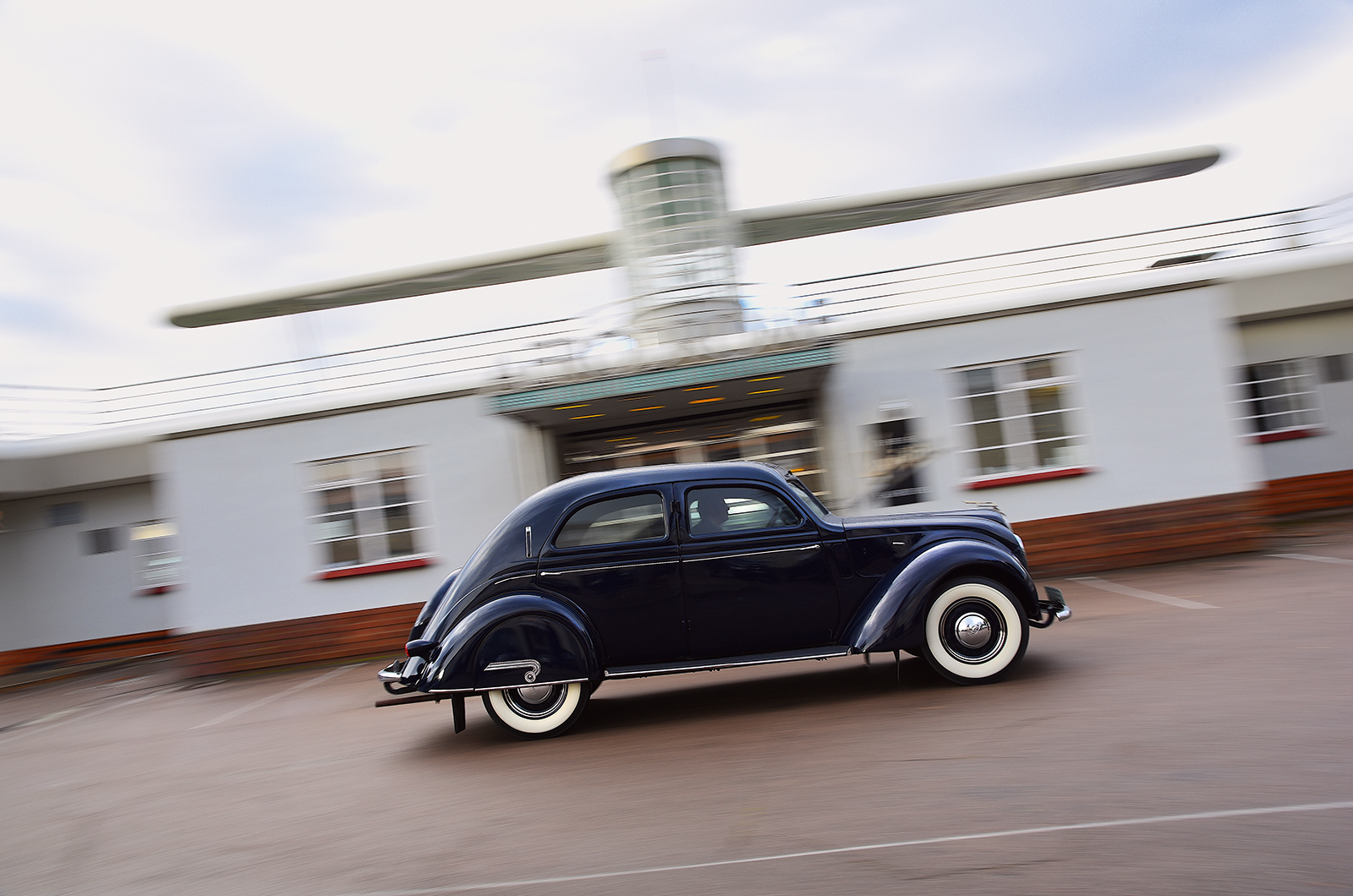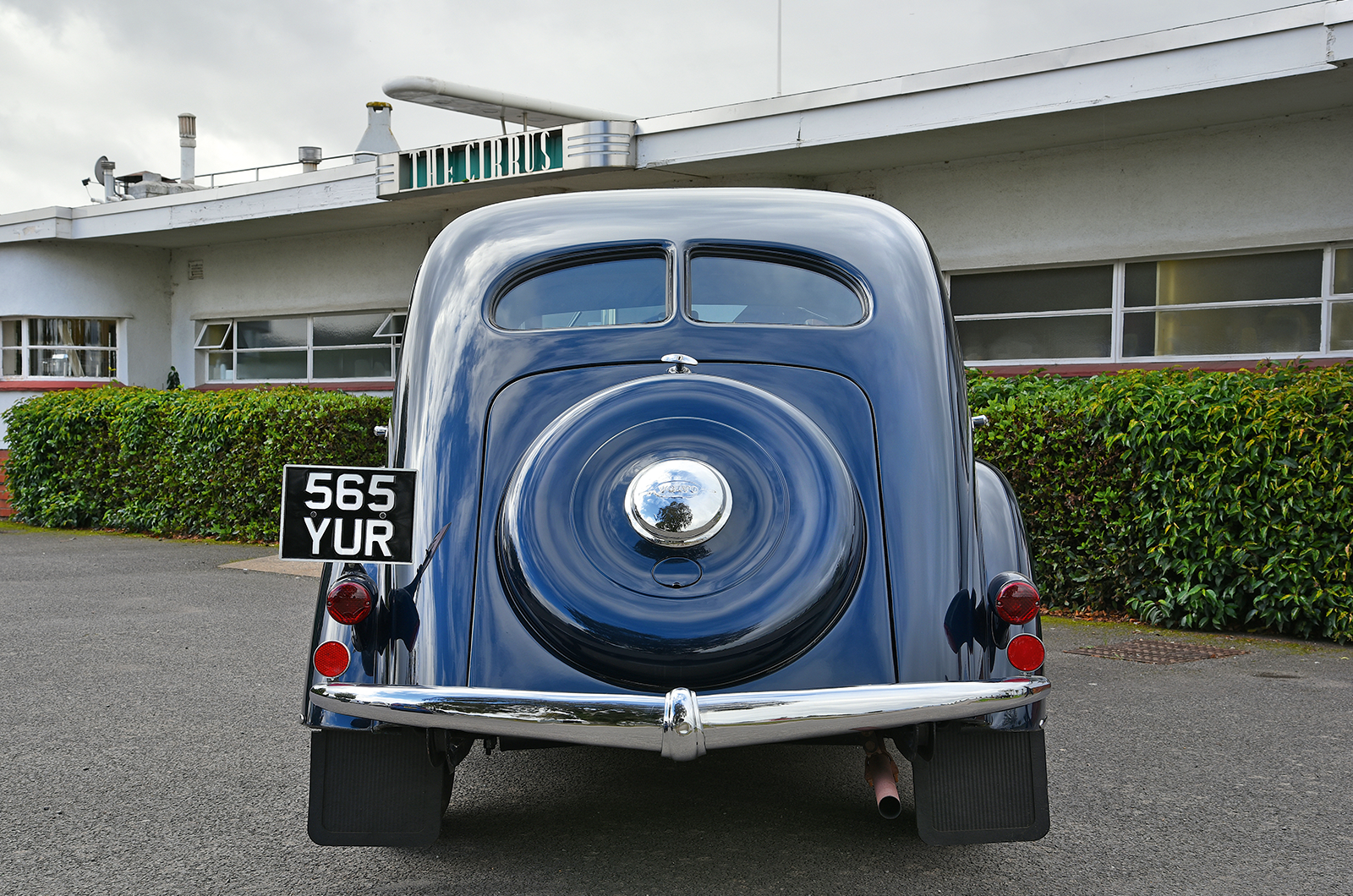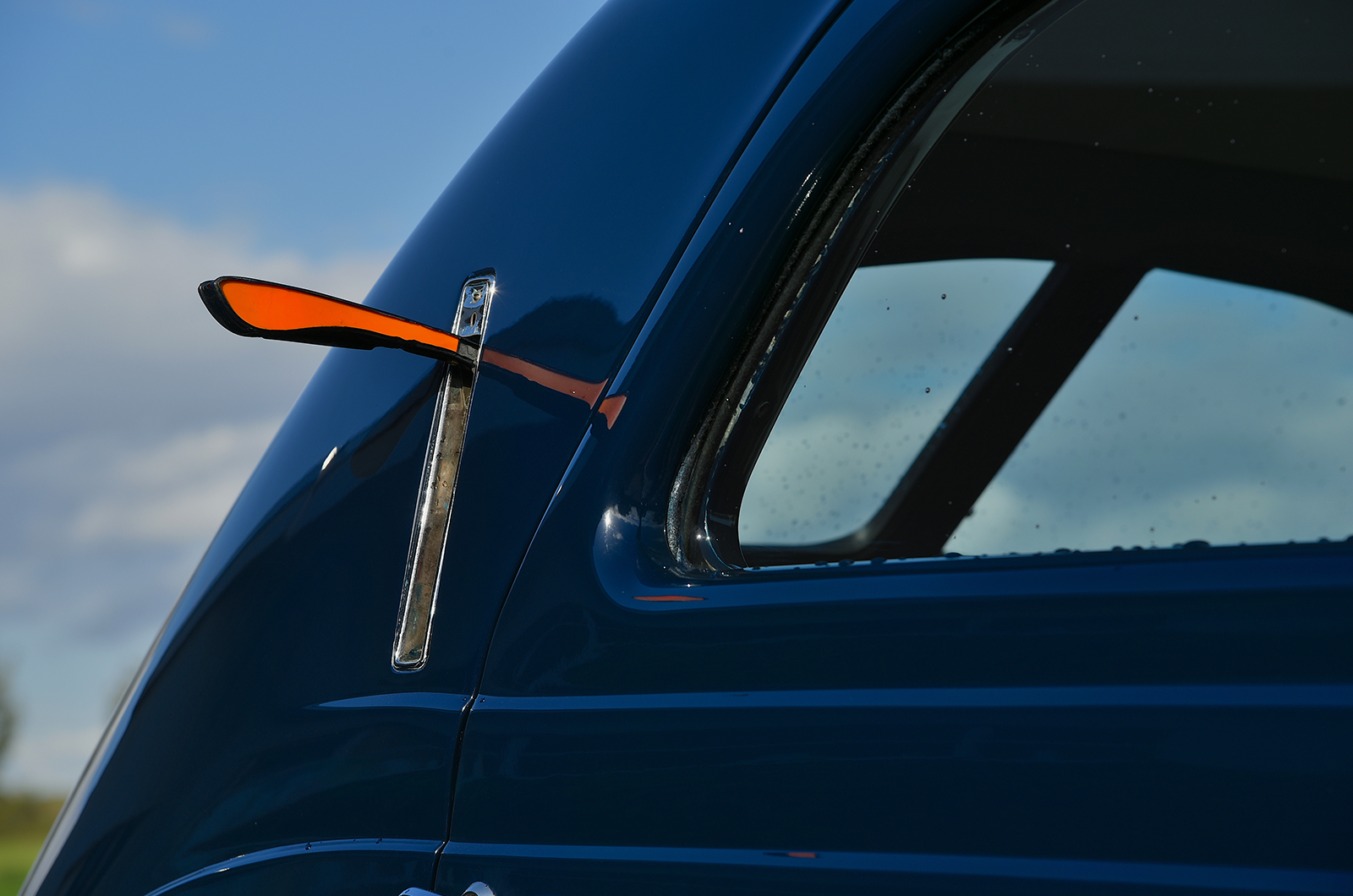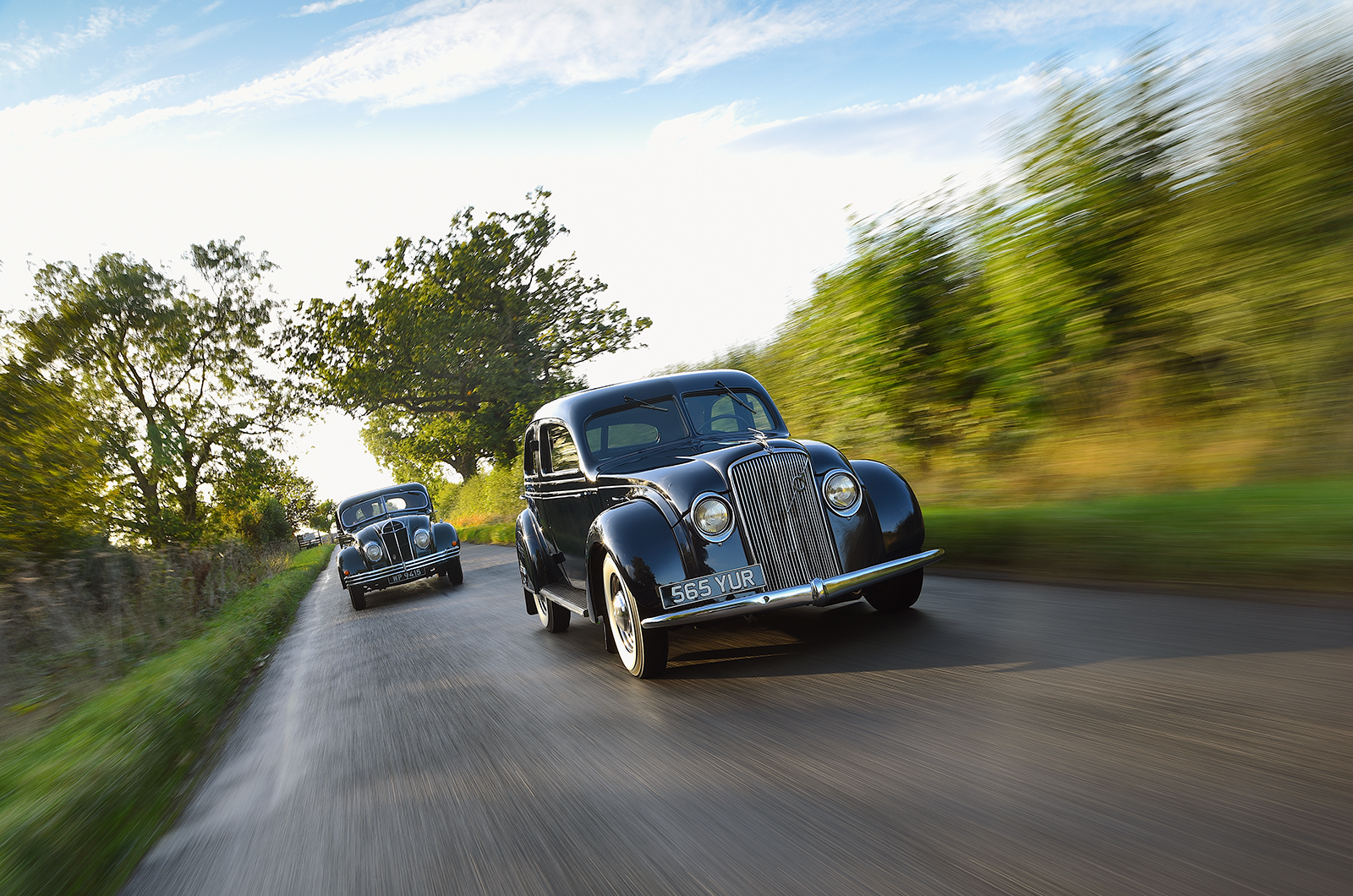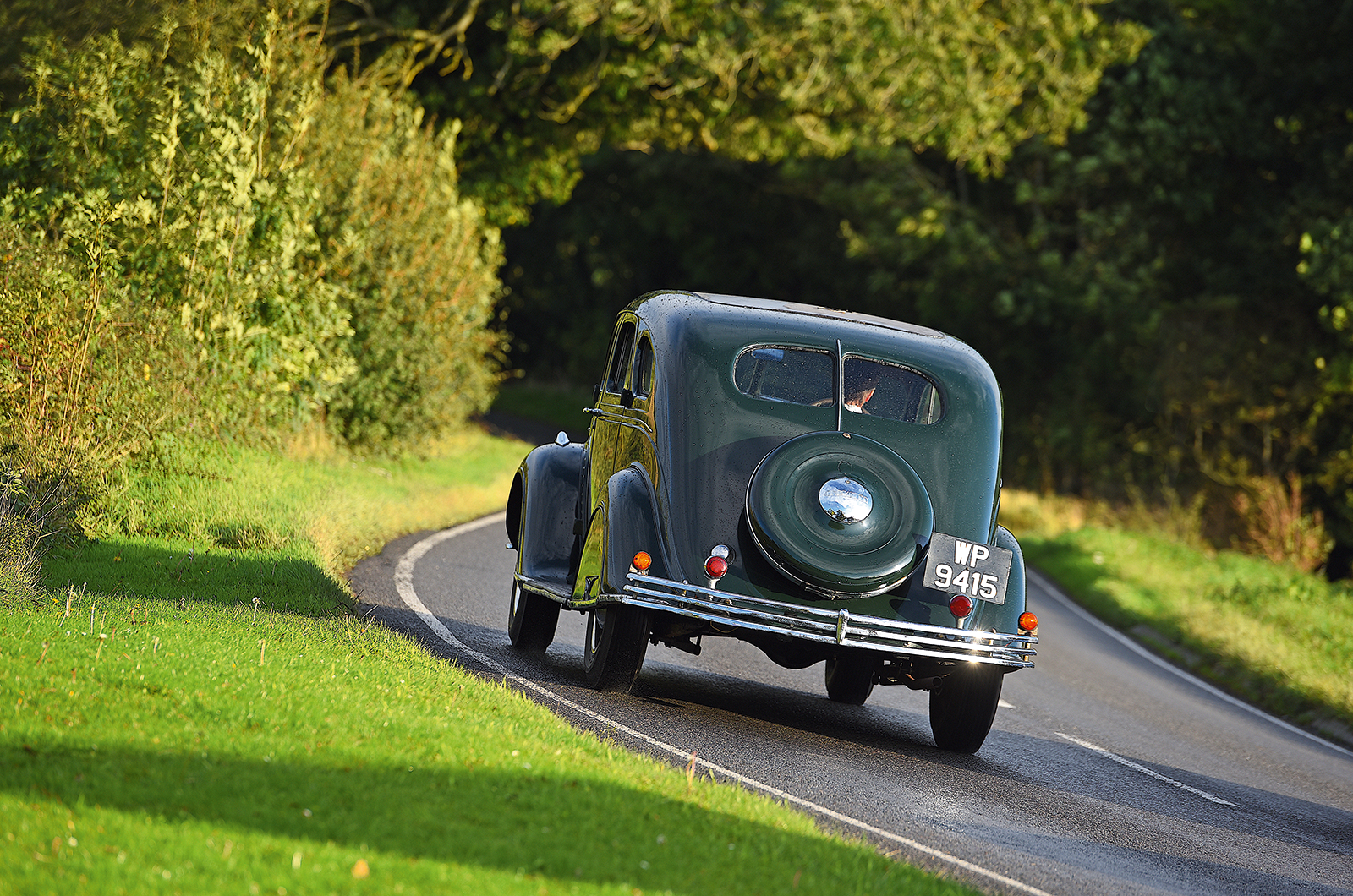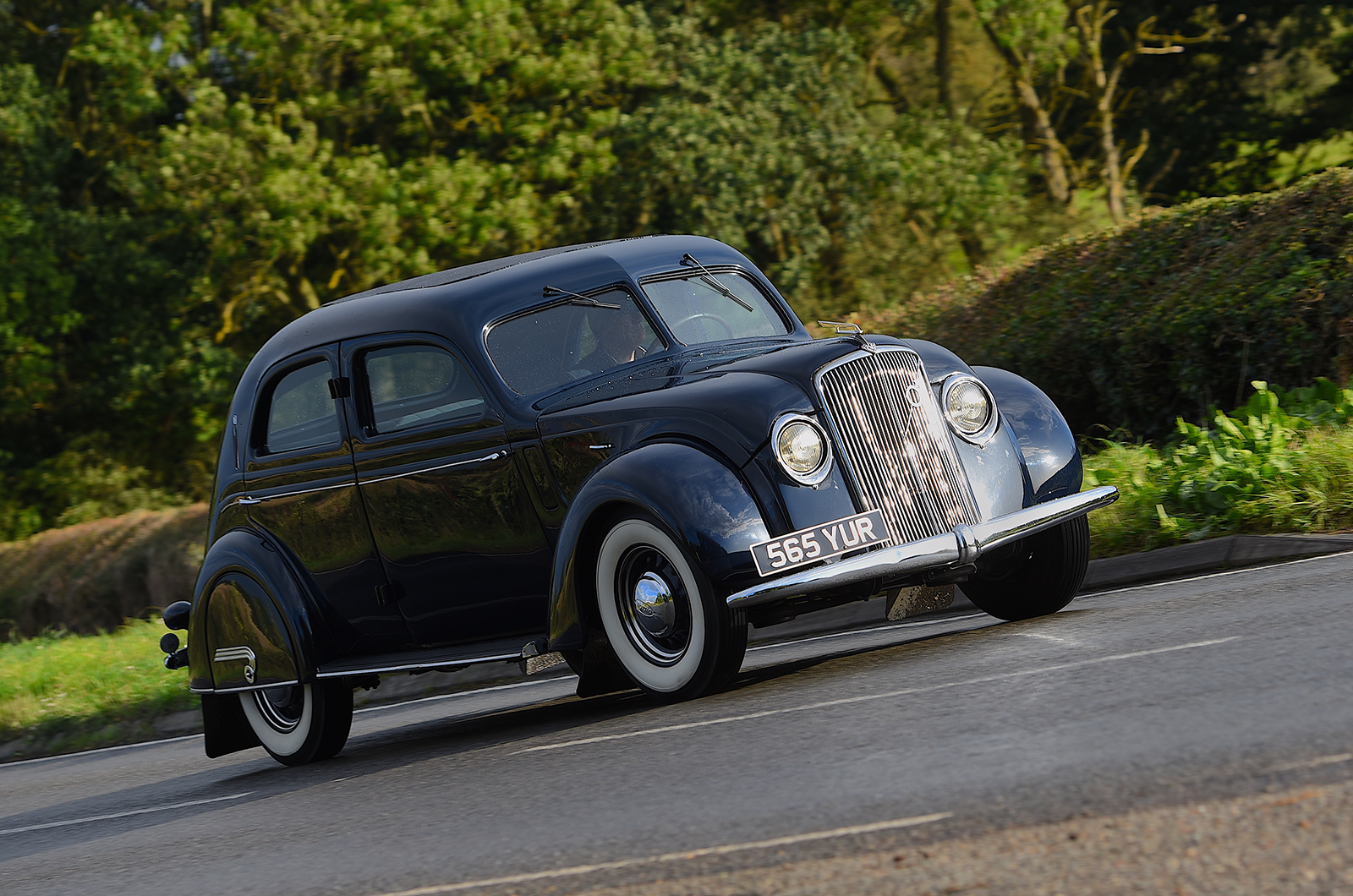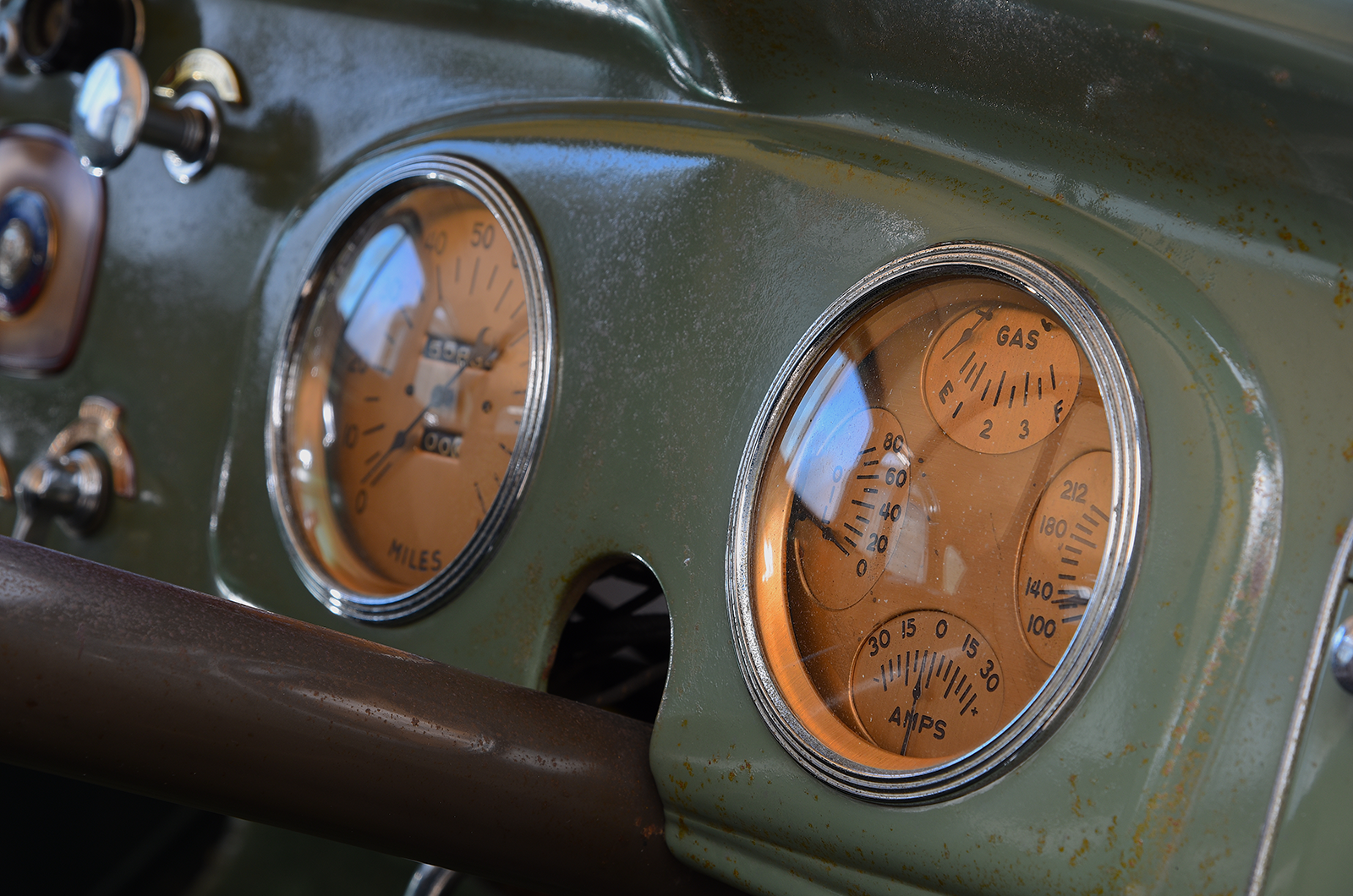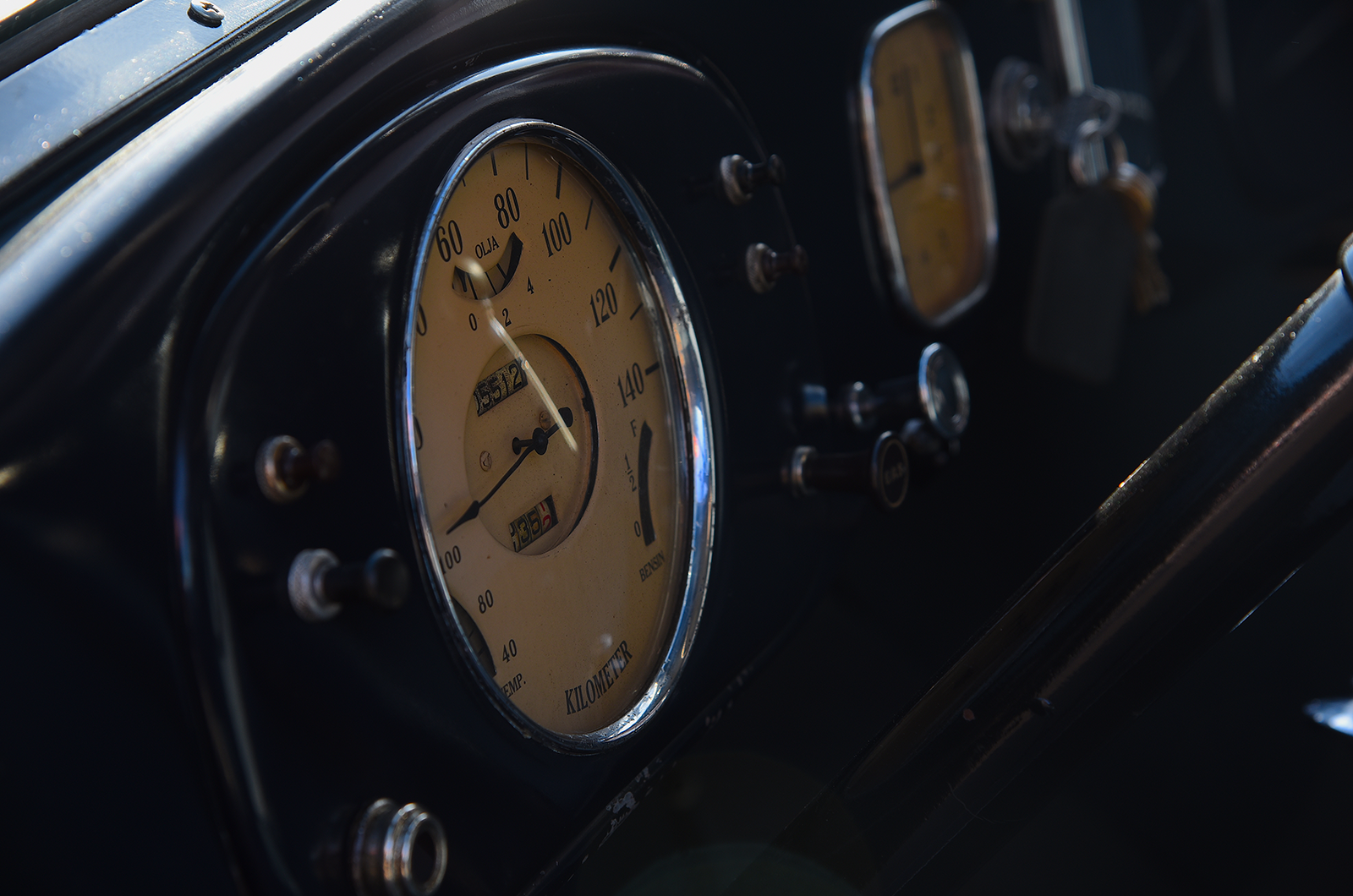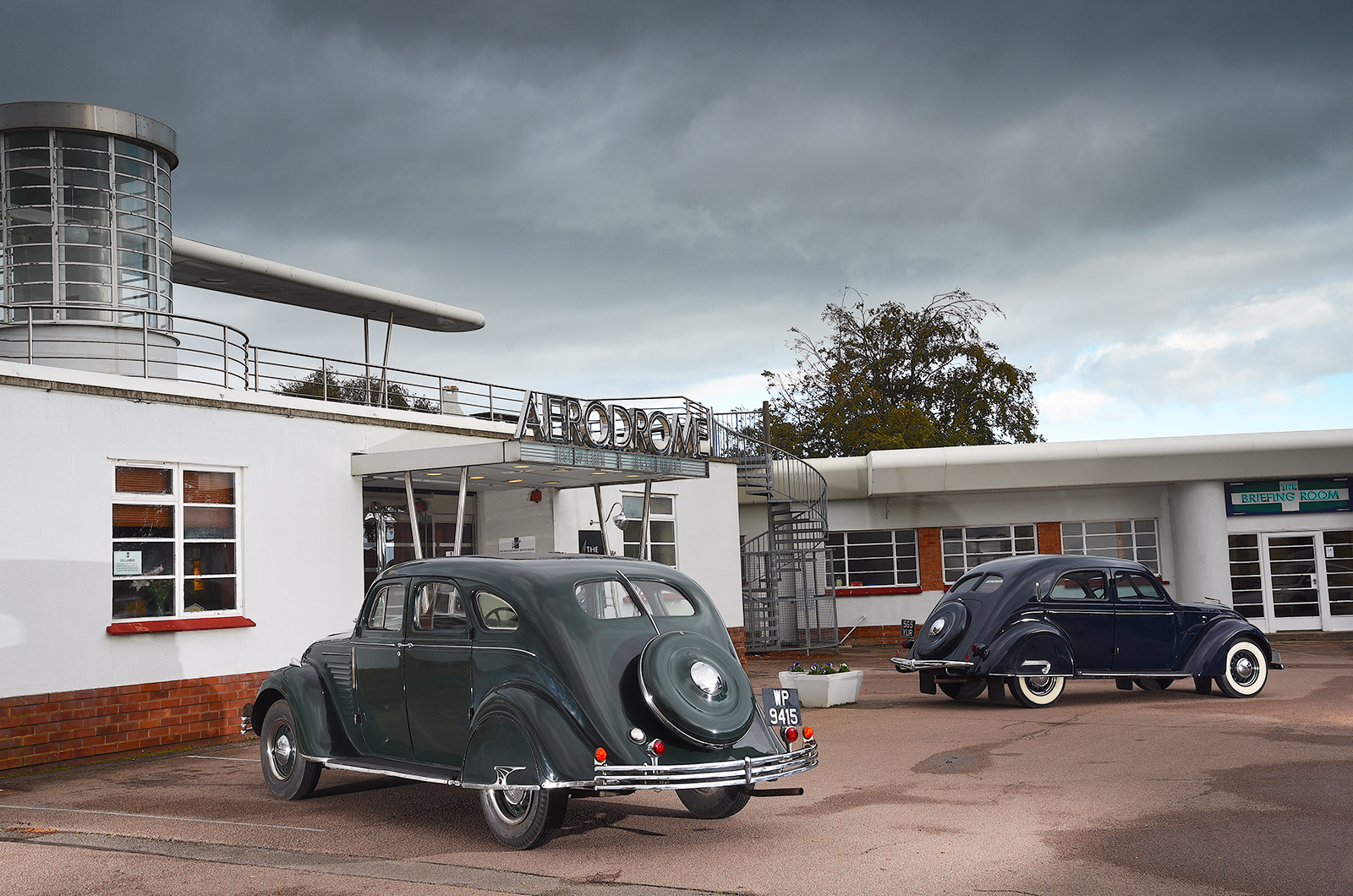The shallow turret top, the two-part glazing front and rear, the fall-away back end, the integrated headlamps and the rear spats with their Deco emblems: we’re on familiar territory, notwithstanding the Volvo’s four- rather than six-light configuration.
Missing, though, are many of the De Soto’s spirited details. There are two-piece vee-shaped bumpers, slightly oval headlamp surrounds, a rather splendid bonnet mascot, and that’s about where it stops.
The sleek Carioca has a distinctive two-piece rear window and semaphore indicators
The same goes for the spacious interior, which is plain and workmanlike, the only glitter provided by the chromed rail topping the front seat.
Bonus point: the Volvo has external access for its decently sized boot.
It also has a heater, an interesting counterpoint to the De Soto, which does without – but which, with its disappearing front quarterlights and its windscreen with two opening panes, is doubtless suitably in tune with rather different US needs.
It’s easy to forget that how the two cars look is only part of the story. How do they drive?
Though separated by the Atlantic, the PV36 (leading) and the Airflow both offer remarkably similar styles – Volvo’s imitation being the sincerest form of flattery
Easy, lazy power is a given, notably for the Airflow, which not only offers 100bhp but also, at 31cwt (1575kg), is 188lb (85kg) lighter than the Volvo.
Unsurprisingly, then, the De Soto offers broad-shouldered and torque-rich performance – without ever descending into the rumbly roughness of an early V8 Ford.
The long and loose gearlever slots in sweetly and, once you’re rolling, you can let the freewheel do its stuff and achieve snatch-free and smooth changes up and down – although the three-speed gearbox does have synchromesh.
The automatic overdrive cuts in almost undetectably, knocking back the revs for relaxed cruising.
Airflow on the road
This is the core of the De Soto’s character, flouncing along the road on its gently soft suspension, that 4-litre ‘six’ turning over unhurriedly, the steering – heavy at low speeds and with a poor lock – holding the car on a steady line with no undue effort required.
Dial in the effective hydraulic brakes and you have a beguiling package for traversing the Far West…but maybe not the West End.
“The overdrive makes it long-legged and it’ll roll along all day at 50-55mph – although there’s a surprising amount of wind noise, given that it’s supposed to be streamlined,” says Moody.
“The long springs deal well with bumpy roads even if the car does roll a bit. I think the springs have settled, though, and this has upset the steering’s geometry and made it heavier.
“For a 1930s car it drives extremely well, but with those seats it’s quite weird – a bit like riding about on a sofa.”
The Volvo boasts coil-sprung independent front suspension and hydraulic brakes
The Volvo plays a different tune – one that’s more sober and Swedish.
The Carioca feels taut, riding more firmly and with a touch more zing to its responses. There’s the same generous low-down torque, and again the big sidevalve is pleasantly smooth.
The steering is loose and slightly vague, the brakes short in travel and efficient, the gearchange sticky in action.
There’s none of the automaticity of the De Soto’s freewheel-plus-overdrive transmission, so you have to take your pause-in-neutral time as you work through the three-speed gearbox with its leisurely synchromesh, if you want to avoid clashing the gears.
But once you’re under way it’s a relaxing old beast – and will surely be better with a bit of attention to the steering.
Contrasting dashboard styles with the Airflow (left) and Carioca
For a company that had only been making cars for eight years, and whose production of passenger vehicles up until 1934 was less than 5000 in total, the Carioca is a laudably resolved machine.
“It’s well built and advanced for its time, but quite heavy,” says Anderson, who found the car in the United States and has been gradually getting it into good running order.
“It’s not as good as the later pre-war Volvos to drive, or my post-war PV60, but it picks up speed quite well and the engine is very smooth.”
It’s clear that the De Soto benefits from Chrysler’s rethinking of American design norms.
Differently, the Volvo has a less showy approach to modernity that seems well judged for a young company needing to poach buyers away from more conventional machinery.
Daring to be different can sometimes pay off
In their native habitats, either car would surely have given satisfaction to its 1930s owner.
But they would have to have had the bravery of an early adopter to have parked the De Soto or the Volvo on their driveways, and suffer the puzzlement and mockery proffered by their unappreciative neighbours.
Such are the perils of being a pioneer.
Images: Will Williams
Thanks to Sywell Aerodrome
READ MORE
Guilty pleasures: Volvo 145 and 245
Massive secret barn-find stash unearthed in France
Your classic: DKW-Auto Union 1000S
Goldmanini: Michelotti’s unique forgotten masterpiece
Jon Pressnell
Jon Pressnell is a contributor to Classic & Sports Car
